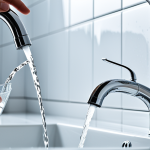Recommended Water Change Schedule for Small UK Garden Pools
Maintaining a consistent water change schedule for small UK garden pools is essential to ensure clean, safe, and pleasant swimming conditions. The UK’s variable climate significantly influences the frequency of water changes. Generally, a complete water change every two to four weeks is advisable during warmer months when pools see frequent use. This helps prevent algae growth and bacterial buildup.
During cooler or rainier seasons, the water change interval can be extended to six weeks or more, as reduced pool usage and lower temperatures slow down contamination. However, if the pool is exposed to heavy debris or suffers from stagnant water conditions, more frequent changes may be necessary regardless of the season.
Also read : Revamping indoor pools: innovative uk solutions to banish chlorine smells
Pool size also dictates timelines. Smaller pools under 500 litres commonly require changes every two to three weeks, especially if used daily by children or pets. Larger small pools might stretch intervals to four weeks. Adapting your garden pool maintenance by noting weather patterns and pool activity will optimize water freshness and minimise unnecessary water consumption.
This tailored, flexible approach to a water change schedule ensures hygiene while respecting the environmental nuances of UK garden pools.
Additional reading : Top techniques to curb algae and mold in damp uk climates
Key Factors Influencing Water Change Frequency
Understanding how pool size, usage, and weather impact water quality is vital to optimise your water change schedule. Smaller pools hold less water, so contaminants concentrate faster. For example, a 300-litre garden pool needs more frequent water changes than one holding 800 litres. This ensures proper garden pool maintenance and avoids water stagnation.
Pool usage also dramatically affects water freshness. Frequent swimmers, pets, or debris accumulation raise contaminant levels quicker, necessitating shorter intervals between water changes. Remember, each swimmer introduces oils and particles that degrade water quality, especially in compact pools.
The UK’s unpredictable climate plays a crucial role too. Rain can dilute pool chemicals but bring in dirt and organic matter. Cooler temperatures slow bacterial growth, extending the effective period before a water change becomes necessary. Conversely, warmer and sunnier days accelerate algae and bacteria growth, requiring quicker intervention.
In sum, tailor your water change schedule by considering these factors: a smaller pool with regular use in warm weather demands changes every two weeks or less, while larger, less-used pools in cooler weather may stretch to six weeks. This approach preserves pool hygiene while accommodating the realities of UK garden pools.
Recommended Water Change Schedule for Small UK Garden Pools
Selecting the right water change schedule hinges on balancing pool size, usage, and the UK’s fluctuating climate. For small UK garden pools, water changes every two to four weeks during warmer seasons support effective garden pool maintenance by controlling algae and bacterial growth. Warmer temperatures and increased sunlight accelerate biological activity, so leaning towards biweekly changes in summer helps maintain clear water.
In contrast, during cooler months or rainy spells, extending the interval up to six weeks is reasonable. Lower temperatures slow microbial proliferation, and reduced pool use means contaminants accumulate more slowly. Nonetheless, heavy debris from fallen leaves or pollen—common in autumn—can demand more frequent changes irrespective of temperature.
Pools under 500 litres with daily use, especially by children or pets, benefit from a tighter schedule around every two to three weeks. Larger small pools or infrequently used ones might safely stretch to four weeks. Adapting this schedule based on weather events, such as prolonged sunshine or a storm, ensures optimal hygiene and water quality. This flexible approach respects both the natural UK environment and the practical demands of maintaining small garden pools.
Recommended Water Change Schedule for Small UK Garden Pools
Establishing an effective water change schedule for small UK garden pools hinges on careful consideration of climate, pool size, and usage. The UK’s climate variability means water changes must adapt to seasonal shifts. During warm, sunny periods, changing water every two to three weeks is optimal to curb algae and bacteria, ensuring garden pool maintenance keeps water clear and safe.
In cooler seasons, intervals can often extend to four to six weeks due to reduced microbial activity and less frequent pool use. However, unexpected weather events, such as heavy storms or prolonged heat, warrant more frequent water replacement to maintain hygiene.
Smaller pools under 500 litres require shorter schedules—around two weeks—especially with daily swimmers or pets, which introduce additional contaminants. Larger small pools or those used infrequently may stretch changes to four weeks without compromising water quality.
Adapting your water change schedule based on weather patterns and usage preserves water freshness and helps avoid unnecessary water consumption. This tailored approach balances hygiene with environmental considerations critical to maintaining healthy UK garden pools.
Recommended Water Change Schedule for Small UK Garden Pools
Understanding the optimal frequency for water changes is key to effective garden pool maintenance across the UK’s variable climate. During warmer months, UK garden pools benefit from a tighter water change schedule, typically every two to three weeks. This is because increased temperature and sunlight accelerate algae and bacterial growth, which degrades water quality faster. In contrast, cooler periods allow for extended intervals, with changes every four to six weeks often sufficient without compromising hygiene.
Adapting the schedule seasonally means adjusting for weather fluctuations. For instance, after heavy rain, debris and organic material can enter the pool, necessitating a quicker water refresh to maintain clarity and safety. Similarly, prolonged sunny spells can demand more frequent water changes to prevent algae bloom.
Pool size and usage patterns significantly influence timelines too. Smaller pools under 500 litres, especially with frequent swimmers or pets, require changes every two to three weeks to avoid contamination buildup. Larger small pools or those used less intensively may safely extend to four weeks. Regularly assessing these factors helps tailor a water change schedule that balances water quality, pool hygiene, and environmental considerations specific to UK garden pools.






